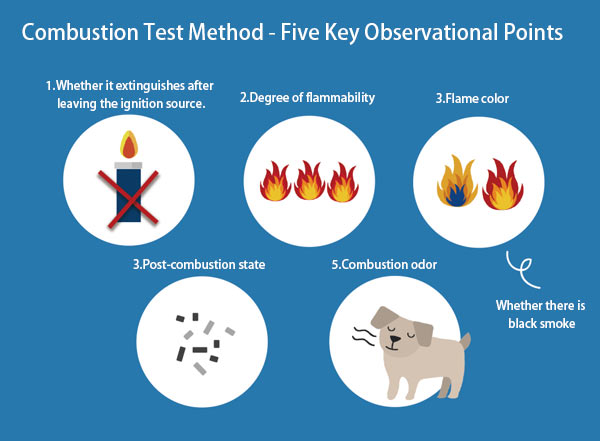When choosing braided cable sleeves for electrical, automotive, or industrial use, it’s not just about flexibility or abrasion resistance. One of the most important performance factors is how the material behaves under fire. That's where flammability testing becomes essential.

Flame Testing for Braided Cable Sleeves – What to Look For
Here are five critical aspects you should observe when performing a flame test on materials used for braided cable sleeves:
Self-Extinguishing Behavior
Does the sleeve continue to burn after the flame source is removed?
Self-extinguishing sleeves are essential for enclosed environments like control panels or automotive cabins.
Ignition Level
How easily does the material catch fire?
Some polymers ignite quickly and are unsuitable for high-risk installations.
Flame Color
What color is the flame—blue, orange, yellow, or sooty black?
The flame color can indicate the chemical makeup and potential toxicity of the material.
Residue and Dripping
What’s left after burning—does it melt, char, or drip?
Non-dripping, carbonized residues are typical of high-grade PET or fiberglass sleeves.
Smoke and Odor
Is there black smoke? Is the odor pungent or chemically irritating?
Heavy smoke and odor may signal halogenated compounds, which could violate environmental standards like RoHS or REACH.
Why It Matters: Fire Performance in Braided Cable Sleeves
Braided cable sleeves are widely used to protect wires and cables in:
Automotive wiring harnesses
Aerospace systems
Electrical cabinets
Robotics and automation equipment
While these sleeves offer excellent abrasion protection and bundle organization, their fire resistance can determine whether they are safe for long-term use.
That’s why most OEMs and system integrators require materials to comply with standards like:
UL 94 V0 – For flame retardancy in plastics
FMVSS 302 – For automotive interior materials
EN 45545-2 – For railway applications (Europe)
How to Perform a Simple In-House Flame Test (For Reference Only)
Always perform tests in a controlled, ventilated area with proper safety precautions.
Step-by-step:
Cut a small sample of the braided sleeve (~10cm)
Suspend the sample vertically using clamps
Apply flame for 10 seconds
Observe if it self-extinguishes once removed
Record flame color, smell, smoke, and post-burn residue
Note: This method does not replace official certification tests, but it helps identify unsafe or low-grade products.
Don't Skip the Flame Test
With increasing demand for safe, environmentally friendly braided cable sleeves, flame testing provides a fast and visual way to verify material performance. It allows buyers and engineers to:
Avoid substandard or counterfeit products
Validate supplier claims about flame retardancy
Ensure the material won’t endanger installations or violate regulations


